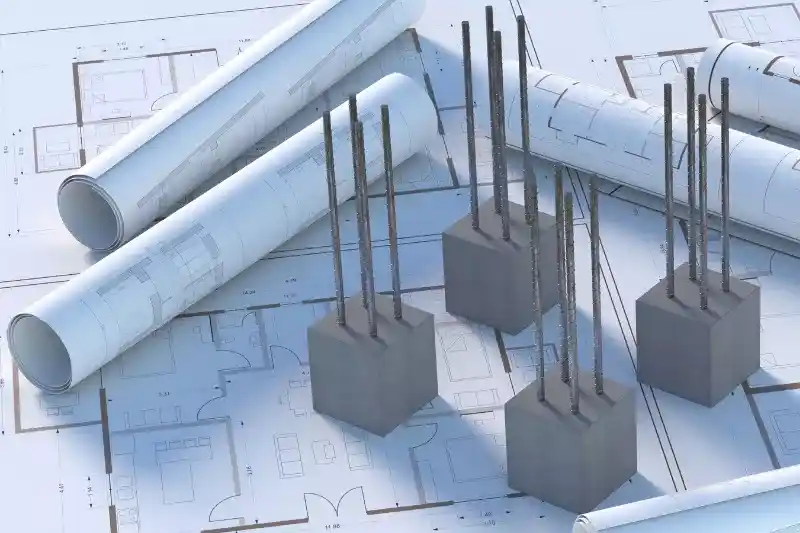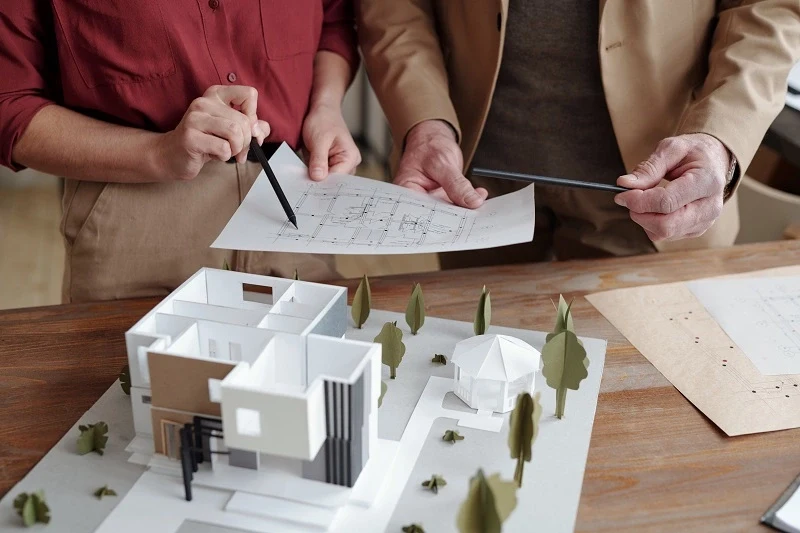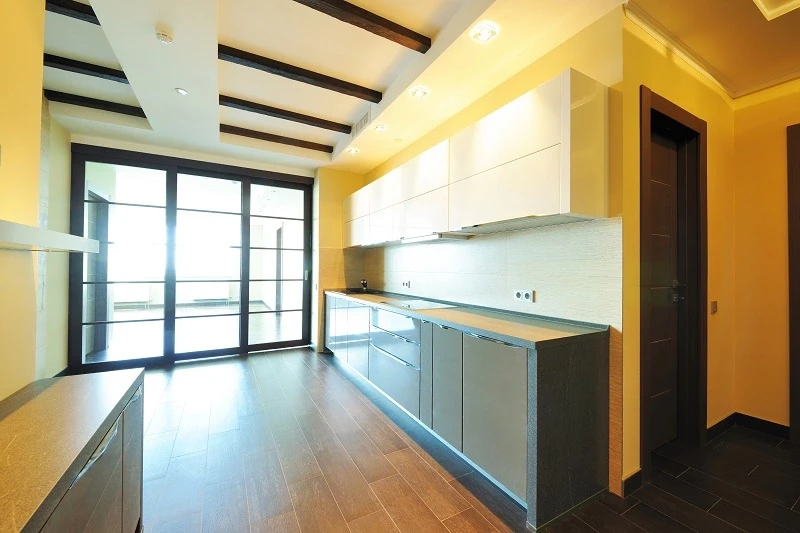Which Types of Formwork are Used in Construction?

Concrete has been used in different forms since time immemorial. Its strength and durability, among a host of other factors, have helped establish concrete as a good building material. Hence, it is used extensively even today to build bridges, roads, homes and a range of high-strength, lasting structures. Concrete, a mixture of cement, sand and coarse aggregates mixed with water, can be moulded into different shapes and sizes to suit a variety of construction purposes.
The term Formwork or Shuttering is used to define the mould used during the construction phase to give the desired structural form to concrete. Once the material is set, the formwork is removed. As a home buyer, knowing about formwork and its use in construction will help you initiate the right questions to understand the structure of your home better.
QUALITIES OF GOOD FORMWORK MATERIAL
Since a variety of materials are available at our disposal, it is important that builders make the right choice while selecting the formwork for the various construction purposes. There are a few properties that are common to all good formwork materials. The most important ones are:
- The formwork should be capable of retaining its shape with adequate props and braces.
- The material should be lightweight and should be able to withstand dead and live loads.
- The joints should be sufficiently watertight to avoid leakage.
- It should be economical in terms of the total cost.
- The material should not change shape when concrete is poured into it.
Also, factors that need careful consideration are the type of concrete to be used and the pouring temperature, since both affect the pressure that will be exerted on the formwork.
CLASSIFICATION OF FORMWORKS
Formworks are most commonly classified based on the building elements they support and the kind of materials used. Understanding the classification on the basis of the building elements, before you move on to the materials used, will give you a clearer idea of where each is well suited -
CLASSIFICATION OF FORMWORK BASED ON BUILDING ELEMENTS
Foundation Formwork
The foundation is the lowest part of the structure of a building and it helps transfer load from the structure to the soil safely. The complexity of the material used to make the foundation formwork depends on the complexity of the project.
Wall Formwork
Wall Formwork is used to erect walls for buildings and other structures like dams, parking areas etc. Here a stable mould is created using wall formwork, which is made up of straight, flat panels held together by bars, couplers and braces also known as falsework. Depending on the structure and the types of forms used, the wall formwork may be temporary or permanent.
Beam Formwork
Beam Formwork is used to support the roof of a structure. It is usually made up of different materials to create a three-sided box that is open at the top and propped in the correct position and desired level. It is removed once the structure is in place.
Column Formwork
Formworks that are used to support the structure are referred to as columns. The materials used to create the column formwork depend on the project type, the costs and the availability.
CLASSIFICATION OF FORMWORK BASED ON MATERIALS USED
Timber Formwork
One of the oldest materials used in formwork is timber. This material is further classified into lumber and plywood. Both of them have their own unique qualities. While lumber is commonly available and is economical and strong, plywood further improves the quality of the finished concrete. Today, timber is used in scenarios where the labour costs are low or where complicated sections call for a framework that is flexible in nature.
Advantages
- Timber is light in weight and is easy to handle.
- It can be easily cut into any shape and dismantled too.
- Timber is good for use in cold areas as it has good thermal resistance, preventing concrete damage.
- It is economical and useful for small projects.
Disadvantages
- Timber formwork has very restricted reuse.
- Dry timber absorbs moisture from the moist concrete, thus weakening the concrete slab.
- Timber that contains excessive moisture compresses the wet concrete and forms cracks in the structure. It may also cause leakage of the concrete through the joints when shrinkage occurs.
Metallic Formwork
Steel and aluminium are two materials used in Metallic Formwork. Both these materials are used to create prefabricated moulds that are held together with clips and pins. This kind of engineered formwork may have higher initial costs, but is economical in the long run since it can be used several times. Though aluminium and steel are both used in metallic framework, there are slightly different. It is important to know that aluminium is lighter than steel in terms of weight as it has a lower strength and lower density too. These factors need to be considered before choosing the metallic formwork.
Advantages
- Both steel and aluminium are strong and durable.
- They are waterproof and are easy to install and dismantle.
- Steel and aluminium create a smooth finish on concrete surfaces and thus reduce the honeycombing effect.
- They are both suitable for curved surfaces.
Disadvantages
- Steel and aluminium are more expensive than wood.
- They are heavy, and thus are difficult to handle and transport.
- Complex modifications are not possible with these materials.
Fabric Formwork
Fabric Formwork or flexible formwork includes the use of lightweight, high-strength sheets of fabric. The use of fabric in construction is fairly new. It has found wide acceptability owing to the fact that it can be designed to adjust to the fluidity of the concrete and thus serves to create interesting architectural forms.
Advantages
- Fabric is light in weight and economical.
- Complex shapes can be created with this material.
- This material does not affect the properties of concrete and is easy to remove.
Disadvantages
- The expertise of skilled workers is required to form perfect and complex shapes.
- Fabric formwork needs some base structure to make it as uniform as standard formwork.
Plastic Formwork
Made of lightweight and robust plastic, this type of formwork is assembled from interlocking panels or modular systems. Plastic formwork is best suited for small projects that consist of repetitive tasks, such as low-cost housing estates and portable homes.
Advantages
- Plastic is light in weight and can be easily cut and shaped.
- It can be easily cleaned.
- Plastic is helpful while making complex shapes and special features.
Disadvantages
- Plastic is expensive.
- The load bearing capacity of this material is low.
- Extreme heat can cause damage to plastic.
Insulated Formwork
Apart from the formworks mentioned above, one of the most advanced kinds of formwork is the Insulated Concrete Formwork. In this type, concrete structures are insulated with high density Styrofoam or other lightweight materials, which stays in place after the concrete has cured.
Advantages
- This material is energy efficient and sustainable.
- It improves the curing time of concrete.
- Insulated formwork provides a natural look.
Disadvantages
- This kind of formwork does not work well in cold climate.
- It is more expensive as it requires expertise.
- Insulated formwork needs a bracing system in order to align the walls to be plumb and square.
Since each property and structure is different in its design and purpose, builders use different types of formworks depending on the project that they are working on and the feasibility and availability of the formwork, while considering the expertise required. Knowledge about formwork is essential for you as a homebuyer because you know what to check in the structure and what questions to ask when you visit properties during your search phase and even thereafter. Putting forth the right questions at the appropriate time will provide you and your family with a durable and safe structure for years to come.









Ask a Question